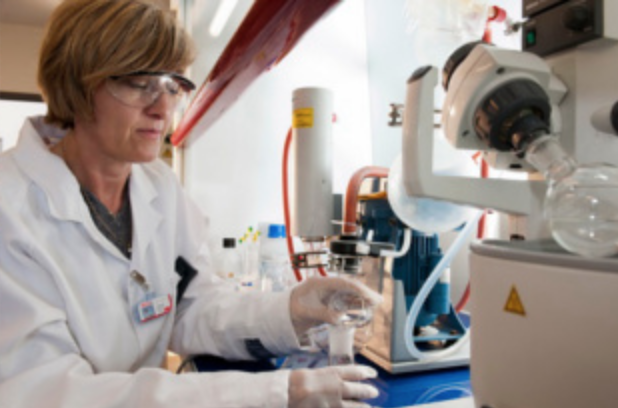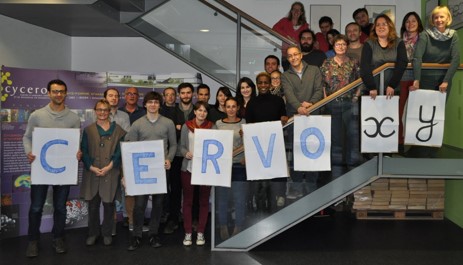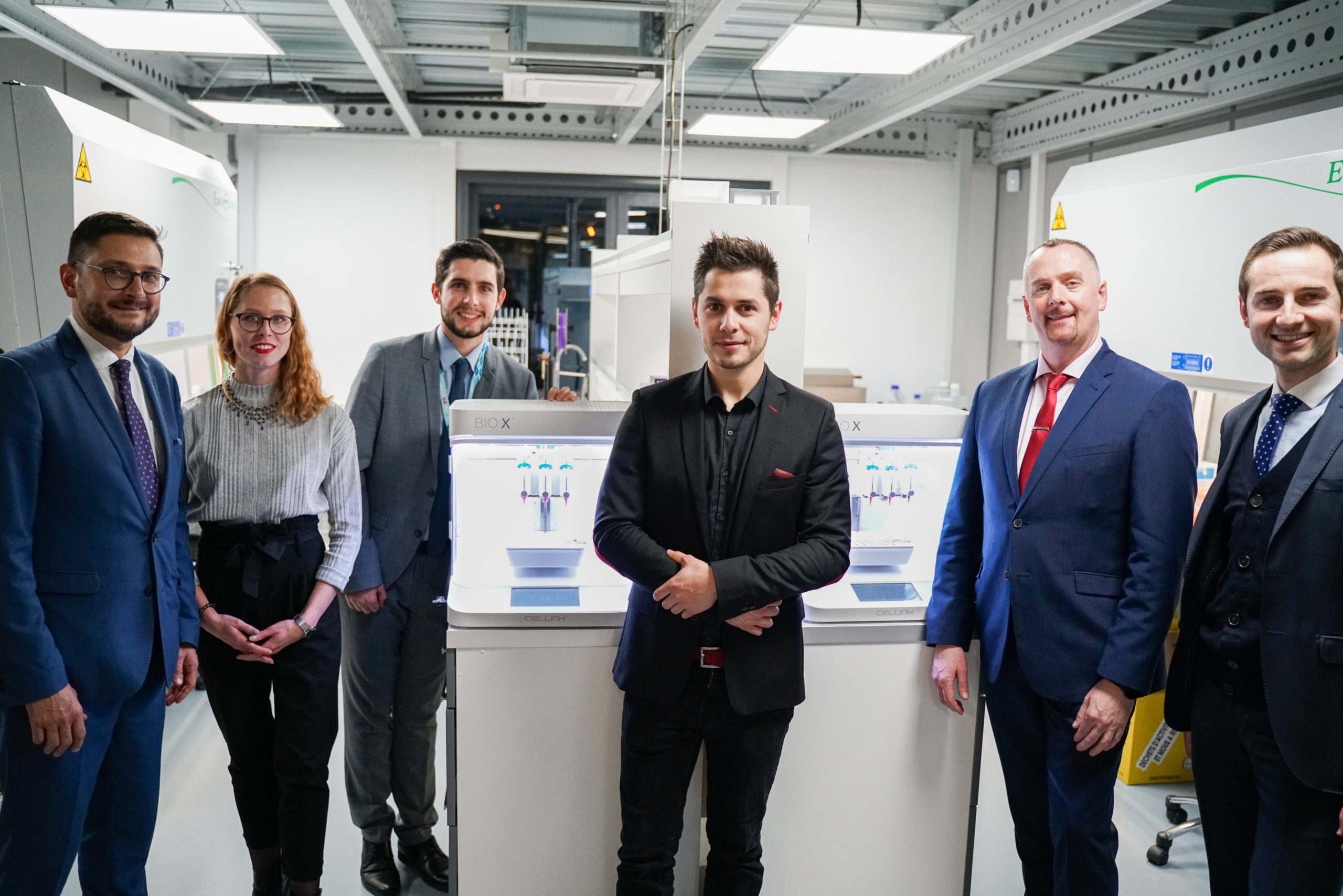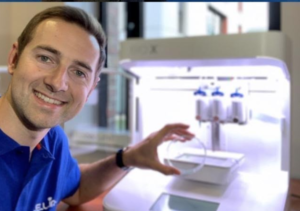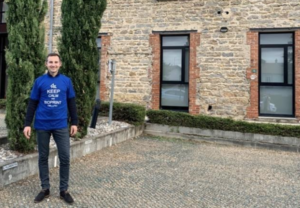Studying cancer biology is among the top priorities for researchers around the world. From consortiums to universities, pharma companies, newcomers in the drug development industry, and research institutions, current research to understand how tumors develop is crucial to progress against the disease. At the University of Caen Normandie (UNICAEN), in France, two teams of more than 30 researchers, clinicians, and doctoral students are developing a new 3D bioprinted tumor model that will provide a novel alternative tool for studying tumor biology and response to anti-cancer treatments.
Many of them are part of CERVOxy, one of the scientific teams of the Imaging and Therapeutic Strategies of Cerebral and Tumoral Pathologies (ISTCT) unit, which was created in early 2012 by the French National Centre for Scientific Research (CNRS), Commission for Atomic Energy and Alternative Energies (CEA) and the UNICAEN, and hosted at the GIP CYCERON imaging platform in Caen, France. CERVOxy’s scientific team focuses on hypoxia and its role in glioblastoma (a fast-growing brain tumor) and brain metastases.
All of these topics are developed in different axes to study tumorigenic or tumor-forming processes, to develop new therapeutic strategies. For example, they are researching how to use hadrontherapy (protons and carbon ions) to treat brain tumors. Moreover, the effects of these therapies on healthy brain tissue are also being evaluated using in vitro and in vivo methods, which is why they have started to develop new models based on bioprinting technology.
3DPrint.com spoke to Nolwenn Pasquet, a post-doctoral fellow from the University of Caen and one of the researchers at CERVOxy focused on studying the effects of radiotherapy and hadrontherapy on the brain healthy tissue in the context of a glioblastoma. Along with her colleagues, Pasquet is using Cellink’s INKREDIBLE+ to perform a great deal of the work.
“Despite recent improvements, treatment of glioblastoma is still challenging and the physiopathology of these tumors is so complex that the use of 2D in vitro models fails to recapitulate the in vivo situation,” indicated Pasquet. “Moreover, there is a lack of relevant models to mimic interactions between the cells, for example, it is not possible for the 2D models to reflect the tumor microenvironment such as the hypoxic gradient and the presence of surrounding cerebral and inflammatory cells. In this context, new 3D brain models obtained by bioprinting are very attractive for glioblastoma studies.”
For this study, Pasquet and fellow researchers used a murine glioblastoma cell line to develop a novel 3D bioprinted glioblastoma model. These cells were then embedded into specific bioinks from Cellink to mimic the extracellular matrix, and followed by bioprinting of the models, which was performed by the INKREDIBLE+ bioprinter, provided to CERVOxy by the LARIA team, part of the François Jacob Institute of Biology, and a collaborator in the development of the model.
According to Pasquet, in further experiments, it will be possible to observe the crosstalk between glioblastoma cells and surrounding cells (astrocytes, inflammatory cells, and more) by combining these cells in the same 3D model and analyzing cell progression, invasiveness, and interactions between them.
“In terms of preliminary results, we observed after bioprinting that glioblastoma cells have a homogeneous distribution until six days and then start to form cell clusters at the periphery of the model at 14 days of cell culture,” explained Pasquet. “Interestingly, these models recapitulate one of the most important features of glioblastomas: hypoxia. Indeed, 14 days after biobrinting we observed a hypoxic gradient in our model with hypoxic cells in the core of the model not observed in the periphery or at six days.”
Pasquet indicated that they also performed x-ray irradiation on these models. X-ray radiotherapy as a complement to surgery and chemotherapy is part of the standard protocol for the treatment of brain tumors. As in medical radiography, it involves delivering photons in different doses, except in this case it is to destroy cancer cells. Through these 3D bioprinted models, the researchers wished to evaluate the response and sensitivity of the cells to irradiation and thanks to specific markers, they were able to evaluate the proliferation of the cells which gives them indications on the evolution of the tumor in its environment.
“For now, we are starting with this new methodology and it is necessary to further characterize the model well and to know its limitations in order to reach a conclusion on the results obtained. For example, it is difficult to rule out the fact that cells interact with each other in this model and real-time microscopy experiments would allow us to verify it. This is an important point and is part of the reason why we decided to develop this type of model in order to recreate the microenvironment that these cells have within the patient’s brain tissue. These results are positive and encourage us to continue our research in this direction.”
The project is led by the laboratory, which is a French National Center for Scientific Research (CNRS) unit –a public-funded institution that covers all scientific disciplines. It is financed by several sponsors, notably the ARCHADE center for hadrontherapy in Caen; HABIONOR European project, co-funded by the Normandy County Council, the French State in the framework of the interregional development Contract “Vallée de la Seine”, and Région Normandie for the Normandy Network for Therapeutic Innovation in Oncology (ONCOTHERA) project.
Pasquet suggested that without bioprinting technology, the information obtained would not have been the same. She explained that “this technology is in full development,” and that “we’ve only been using it for a short period of time, just over a year, and there’s an important characterization step depending on what you want to study before you can do tests.”
The expert concluded that she “believes that there is a relevant distinction to be made about the models used in bioprinting, and many are going to be used to reproduce a fully functional organ in the fields of medicine and tissue engineering. The interest in 3D bioprinting is to create complex cellular structures through a process of superimposition of successive layers, and it is this aspect that is of particular interest to us in order to have a new and more complex study model for our research.”
The post UNICAEN: New Bioprinted Tumor Models Help Researchers in France Study Its Biology appeared first on 3DPrint.com | The Voice of 3D Printing / Additive Manufacturing.



